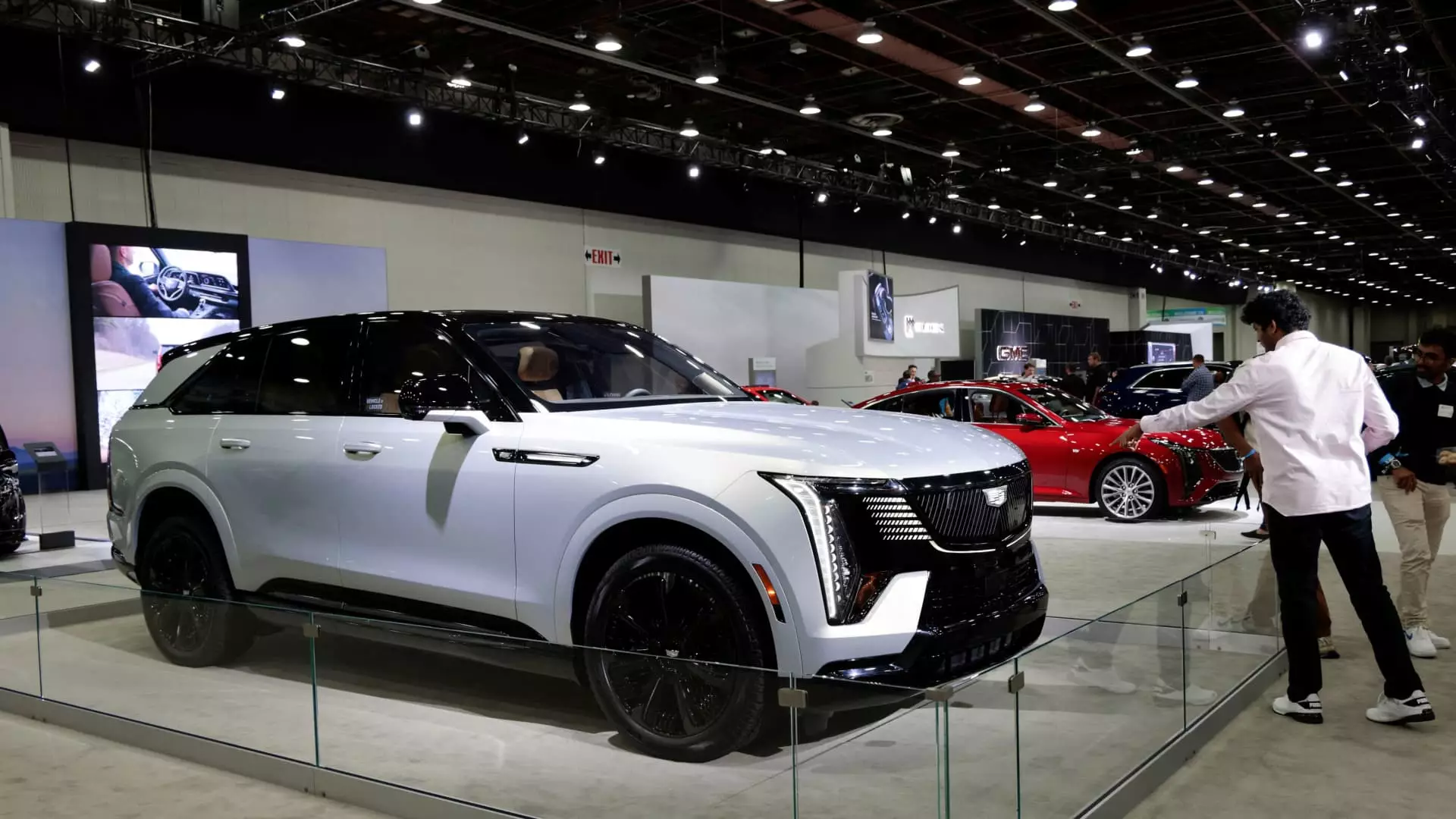In a striking move that seemingly defies the odds, Cadillac is ambitiously rebranding itself for a new era dominated by electric vehicles (EVs). The iconic American luxury automobile manufacturer is strategically diversifying its lineup to attract a fresh cohort of buyers, many of whom are departing from the prevailing giant of the EV market—Tesla. While Cadillac’s latest electric models appear to resonate with consumers, the narrative surrounding loyalty, identity, and brand allegiance in the luxury sector complicates this robust growth story.
Cadillac reports an impressive statistic: nearly 80% of customers purchasing its EVs are new to the brand, with about 10% making the decision to trade in their Tesla vehicles. Such figures signal not just a momentum shift in consumer behavior but perhaps a quiet rebellion against Tesla’s previously unchallenged dominance. With products like the Lyriq SUV capturing attention and seemingly winning hearts, the allure of American luxury—a notion long overshadowed by the Silicon Valley tech giant—seems to be resurfacing.
The Politics of Buying: A Complicated Narrative
The dynamics at play here are multifaceted, especially given the social and political climate. Cadillac executives casually suggest that Tesla’s dip in sales and the political controversies surrounding CEO Elon Musk are irrelevant to their newfound successes. This assertion might be a tad convenient and raises questions about how deeply consumer sentiment intertwines with political identity. Are buyers motivated purely by Cadillac’s product merit, or is there an underlying desire to distance themselves from a brand increasingly associated with divisive political rhetoric?
Industry analysts have pointed out a revealing trend: the customers abandoning Tesla don’t appear to be actively “cross-shopping” brands in the traditional sense. Instead, they’re opting for a change, demonstrating a distinct eagerness to cast aside a formerly cherished brand. Joseph Yoon from Edmunds notes that these consumers may prioritize escaping the Tesla experience over meticulously evaluating their next vehicle option. This notion injects a layer of complexity into the Cadillac-Tesla rivalry, hinting at deeper consumer dissatisfaction rather than mere preference for alternative technology or aesthetics.
A Diversified Portfolio: Cadillac’s Strategic Approach
Cadillac is touting its diverse lineup, which includes the entry-level Optiq and the premium Celestiq, as the cornerstone of its growth movement. With models at various price points, Cadillac is appealing to a broader audience, thereby establishing itself as a leading contender in the luxury EV race. While this diversified portfolio is indeed a positive sign, it also begs the question: can Cadillac transform its historic branding to adapt to a future steeped in sustainability and tech innovation?
In an essential observation, the majority of cross-shopping by Cadillac consumers is limited to the brand’s own offerings, with domestic competitors featuring prominently. If Cadillac strives to be the leading luxury EV manufacturer—a label it is fervently chasing—it must navigate beyond merely being an alternative for former Tesla owners. The challenge lies in establishing a competitive, appealing identity that can be sustained. Can it establish itself not just as a fallback for those exiting Tesla, but as the pinnacle of an aspirational trend into the future of electric driving?
The Future of Luxury EVs: Cadillac’s High-Stakes Gamble
While the momentum is palpable, the reality remains that Cadillac is not without its challenges. For all the enticing figures and proclamations of superiority, many Tesla models continue to dominate consumer searches and remain coveted in the luxury sector. Metrics from Edmunds indicate that Tesla retains a loyal consumer base that is not readily transferable to Cadillac vehicles.
This presents a high-stakes gamble for Cadillac, which is putting all its chips on the table in a bid for EV leadership. It’s an earnest effort, yet it’s crucial to recognize that the market is fluid, and the battle is far from over. Will Cadillac succeed in rekindling the allure of American craftsmanship in the sustainable mobility segment? That remains uncertain, but the stakes have never been higher in the race for prestige within the luxury EV domain.
With changing consumer preferences and the evolving landscape of automotive technology, Cadillac must be vigilant. It cannot merely rely on fleeting trends or a momentary political schism in the market. The brand’s strategy should be grounded in innovation, continuous improvement, and most importantly, an unwavering commitment to delivering value that resonates with a discerning and evolving clientele. As the luxury EV market heats up, Cadillac’s narrative is only beginning to unfold.


Leave a Reply